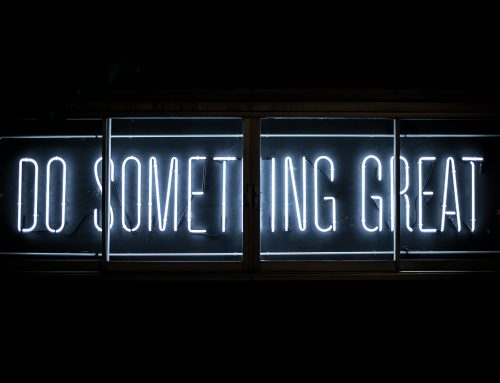Analytical Thinking vs Creative Thinking
At times, advertising seems like a divided field. Employers hire different types of professionals to fulfill varying tasks. On the advertising creativity side, you have the art directors and copywriters whose effectiveness depends on coming up with unique, thought-provoking concepts. On the nuts and bolts side, the account planners rely on research and insights to inform and apply structure to concept development.
When team members come from two different spectrums of the drawing board, there are plentiful opportunities for conflict and opposition when it comes to brand and product development. Rather than focusing on the differences in approach, both parties must learn how to blend the evaluation and creative process simultaneously. This fosters the ideal environment for effective development. Failure to do so may result in gridlock and uninformed judgment of imaginative concepts and themes.
In universal terms, analytical and creative thinking utilize problem-solving abilities that rely on different skill sets. Analytical thinking can also be called logical thinking, while creative thinking is sometimes referred to as “lateral” thinking. Others illustrate the point further as being more left-brain (analytical) or right-brain (creative) thinking.
The Application of Analytical Thinking
The most effective brands merge original branding ideas and a comprehensive understanding of the research conducted to understand the marketplace, the product, and the consumer. Analytical thinking breaks down research into usable insights that will guide the creative process. This type of careful analysis is essential. The results allow team members to discover opportunities, assess audience engagement and achieve the correct positioning within the brand’s competitive landscape.
Analytical thinkers need to apply their process for the following areas to prove themselves:
Communication. Communicating the patterns and solutions that you find in large swaths of data is a feat unto itself. You have to report and present your findings, effectively streamlining processes for improved productivity.
Creativity. Even though we’re talking about analyzing, your right-side brain extrapolates the data that others don’t see and then comes up with strategic planning. This strategy can synthesize the process into a new model and accommodate the budgets.
Critical Thinking. Part of being analytical is being critical. Critical thinking refers to evaluating the information extracted from the data and then making a decision. These decisions can involve risk assessment and prioritizing tasks accordingly.
Data Analysis. Perhaps data analysis already sounds like what we have been discussing, but applying your analytical thinking encompasses not just being able to understand data, but being able to apply it to various scenarios.
Research. Having the right conclusions means mining from the right data. A good analyzer is a good investigator, separating facts from fluff in your inventory of information from which to draw strategy.
Feed the Creative Process
Since analytical thinking feeds the creative process by inferring buyer motivations and preferences, professionals can walk into the development meeting knowing what they want to achieve through a well-crafted brief. In turn, time spent developing, testing and evaluating potential concepts can be reduced significantly. An account planner can use a thorough understanding of research insights to produce a good creative brief. This brief will reduce the likelihood of a contest between creatives and account planners over the strategy and executions.
A good creative brief is an ideal love-child between creative and analytical thinking. Looking at problems or situations from a fresh perspective can provide atypical solutions. Try using unstructured approaches such as brainstorming to feed your inspiration. If you need a structured process, then try lateral thinking, a form of structured creative thinking. Left-brain thinking tries to meet problems head-on while lateral thinking wants to bypass problems completely with a radically different approach. Lateral thinking changes the frame of reference.
Maintain a Balance
To ensure analytical thinking and creativity are used harmoniously, creative teams must embrace strategy development, research, and out-of-the-box thinking, without stifling any of the three. This includes having a well-rounded production team, comprised of research savvy account planners and open minded and art directors.
Never think of creative thinking vs analytical thinking as competition for people working on your team. With that said, challenge yourself to do both while acknowledging that others might have a propensity for one or the other. This kind of empathy for your team members’ abilities allows others to shine and makes you a more valuable asset to any group. For example, if you can tell who is more analytical vs creative, you can have each member play to their strengths. Think of ways to present hard data to the analytical thinker and more visual examples to the innovative thinker.
Cultivate your Creativity at Florida International University (FIU)
The Global Strategic Communications Creative Track program leads to a Master of Science Degree in Mass Communication with a specialty in Creativity, also known as the Creative Track. This program, in partnership with world-renowned Miami Ad School, is designed to tap into a student’s creative skills and strategic thinking. Learn how to develop an advertising campaign through the analysis of a brand’s issues with unique solutions that engage consumers at the deepest levels.
The program combines the theoretical and academic courses of Florida International University with creative skills development courses taken at Miami Ad School, learning from instructors that are at the top of their academic and professional careers.
If you are ready to harness your creative ability and strategic thinking, and earn a graduate degree from two top institutions, contact Professor Grizelle De Los Reyes, Director of the Global Strategic Communications Creative Track program.



